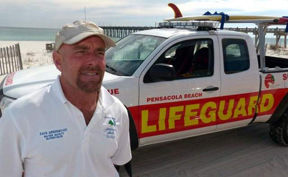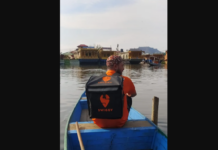 PENSACOLA BEACH, Fla.: On Labor Day weekend 2003, the scene along Santa Rosa and Escambia beaches was one of pandemonium.
PENSACOLA BEACH, Fla.: On Labor Day weekend 2003, the scene along Santa Rosa and Escambia beaches was one of pandemonium.
Sheriff’s deputies in helicopters buzzing over the beach begged people to get out of the dangerous surf in the Gulf of Mexico. With no laws on the books to force people to stay out of the Gulf on a red flag day, sirens wailed warning of dangerous conditions. People ignored them and died.
That holiday weekend, three swimmers lost their lives on Pensacola Beach alone, bringing the total number of drownings to 21 since 2000. The 8.2-mile stretch of sand, guarded only by 21 lifeguards working out of a bread truck, earned a reputation as the most dangerous beach in the continental United States. That galvanized the community to transform that tragic trend and image.
A decade later, lifeguards returning to their towers this weekend are working for a vastly improved public safety program.
It now serves as a model for other communities, with a 90 percent reduction in drownings in the past decade.
“It’s night and day,” said Bob West, Pensacola Beach’s public safety supervisor, who was recruited in 2004 to transform the department. “The culture here is completely different. We expect more professionalism. It took years to change the culture because it took a 100 percent buy-in from everyone.”
Improvements continue. This year’s program is expected to be beefed up with 60 lifeguards – the largest team ever – who will be marching to the beat of newly minted value statements that last year’s team adopted. The values leave no room for lifeguards to misunderstand what’s expected of them.
Professionalism: Always represent Pensacola Beach in the best possible light. Believe: Believe in the people and system around us. Lifestyle: We live healthy and drug-free. Goal-setters: We are leaders who always look to make ourselves and others better.
To be sure, the statement is to prepare the team to face a more daunting task than their predecessors a decade ago or even a few years ago, with a record number of tourists – several million strong – expected to hit the sugar-white beaches this year.
“When visitors drive over the top of the Bob Sikes Bridge and see that emerald-green water, they don’t realize how dangerous it can be,” said Water Safety Supervisor Dave Greenwood, a veteran with 26 years lifeguarding on Santa Rosa Island. “Our job is to make sure every family who comes to the beach has a nice, safe time and all leave together with great memories.”
West has a goal for this year’s team: “Zero drownings,” he said.
It’s a difficult challenge – given the fact that some people will drown in unguarded areas like Santa Rosa Sound or die from medical complications days or weeks after being rescued, West said.
Every year, West and Greenwood raise expectations for their lifeguards. For instance, success is measured by how many so called “prevents” are made. That’s the number of people lifeguards approach to prevent them from getting into trouble by pointing out rip currents and other beach hazards.
In 2009, there were 4,879 prevents. That number swelled to 16,450 in 2013 by pushing the notion that a lifeguard’s job is about serving the people who come to the island instead of sitting in a lifeguard tower waiting for someone to yell “Help!”
It’s that dedication to service, along with camaraderie, that keeps Hilary Rivkind, 26 – a Gulf Breeze resident and a fourth-grade teacher at Holley Navarre Intermediate School – returning to guard the beach every summer since joining the team in 2008.
“Being a teacher and a lifeguard are two ways to change people’s lives,” she said. “I go home after a rescue and run it back through my head, and I’m glad I was able to help.”
West is careful not to disparage the lifeguards of the past when comparing them to today’s team. He was one of them from 1974-79.
They were dealing with much smaller crowds, half of what they see now. And they were doing what was expected of them in the absence of a mission statement and a higher level of training that lifeguards have today.
One of the biggest past critics of the Pensacola Beach lifeguard program was B. Chris Brewster, president of the California-based United States Life Saving Association. He said he’s seen remarkable changes.
“Clearly, the level and quality of the lifeguard protection has risen dramatically in 10 years,” he said. “The community has gone from taking a blissfully ignorant approach to water safety to being actively engaged in making water safety a priority.”
Today’s lifeguard program, West pointed out, literally took a village to whip into shape.
“I’m one cog in that big, old wheel,” he said, “just like the media, the board, and the community.”
The media shifted from only reacting to drownings and rescues to becoming part of the solution by educating the public about dangerous surf conditions, rip currents and the flag warning system, West said.-AP






